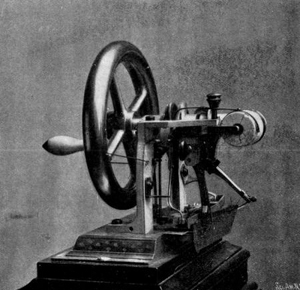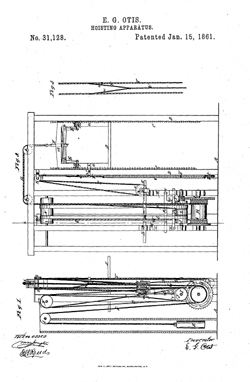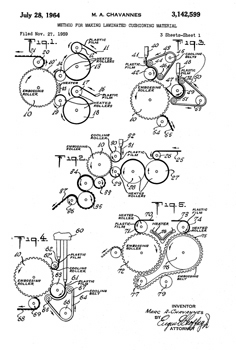 One of the greatest life saving inventions ever made was the EKG. To this day, variations of the original EKG machine help to discover heart disease and prevent heart attacks. An EKG machine picks up electrical pulses from the heart and records them in wave tracings. These waves help physicians diagnose cardiac abnormalities. The development of the first practical EKG began in 1889 at the First International Congress of Physiologists. Willem Einthoven saw British physiologist August Waller demonstrate recording the electrical activity of a heart using his dog.
One of the greatest life saving inventions ever made was the EKG. To this day, variations of the original EKG machine help to discover heart disease and prevent heart attacks. An EKG machine picks up electrical pulses from the heart and records them in wave tracings. These waves help physicians diagnose cardiac abnormalities. The development of the first practical EKG began in 1889 at the First International Congress of Physiologists. Willem Einthoven saw British physiologist August Waller demonstrate recording the electrical activity of a heart using his dog.
Willem Einthoven, a Dutch doctor, began experimenting with the knowledge that the beating of the heart produced electrical currents. He expanded on the ideas of Waller. Starting in 1901, he began developing a series of prototypes of a string galvanometer. After 2 years of designing and experimenting, Einthoven perfected the practical EKG machine in 1903.
The machine used a very thin piece of wire which passed through electromagnets. The wire was connected to electrodes on the patient’s chest. The patient had to have his or her hands submerged in salt water baths to conduct electrical impulses. The electromagnetic field made the wire quiver ever-so-slightly as the heart beat. With the use of film and a light shining on the wire, the invention was able to precisely record both the strength and rate of the patient’s heartbeat. Einthoven’s machine weighed 600 pounds and was the size of a small room. Five technicians were needed to operate the machine. The machine was huge and cumbersome to work with but it was stable and extremely accurate. Continue reading “Invention of the EKG Machine”


 People attempted for decades to design a properly functioning sewing machine. There were many machines designed and patented which simply did not work. Then in 1830, Barthelemy Thimonnier, a French tailor, developed a successful model. This machine caused fear and outrage among tailors in France. Afraid that they would lose their livelihoods to this invention, a group of tailors destroyed the plant where Thimonnier was producing his sewing machine.
People attempted for decades to design a properly functioning sewing machine. There were many machines designed and patented which simply did not work. Then in 1830, Barthelemy Thimonnier, a French tailor, developed a successful model. This machine caused fear and outrage among tailors in France. Afraid that they would lose their livelihoods to this invention, a group of tailors destroyed the plant where Thimonnier was producing his sewing machine. Did you ever wonder why you have to wait until the final rinse to add the fabric softener to your laundry? Laundry detergent and fabric softener can’t be mixed because the mixture causes a chemical reaction which forms a solid.
Did you ever wonder why you have to wait until the final rinse to add the fabric softener to your laundry? Laundry detergent and fabric softener can’t be mixed because the mixture causes a chemical reaction which forms a solid. Did you know intellectual property protection in America is about as old as America itself?
Did you know intellectual property protection in America is about as old as America itself? The first passenger elevator was designed for France’s King Louis XV for his personal chambers in Versailles in 1743. Called the “Flying Chair” the elevator only went one floor, connecting the king’s chambers to his mistresses’ on the second floor of the palace. The king entered his elevator through his balcony and a arrangement of weights and pulleys hanging inside a chimney were pulled to raise or lower the chair.
The first passenger elevator was designed for France’s King Louis XV for his personal chambers in Versailles in 1743. Called the “Flying Chair” the elevator only went one floor, connecting the king’s chambers to his mistresses’ on the second floor of the palace. The king entered his elevator through his balcony and a arrangement of weights and pulleys hanging inside a chimney were pulled to raise or lower the chair. You can add the microwave oven to the list of products invented by accident. Dr. Percy Spencer was not trying to invent a faster way to cook when he discovered the principal behind the microwave oven. Instead, Spencer was working for the Raytheon Corporation testing a new type of vacuum tube known as a magnetron. One day, he discovered that a candy bar which he had in his pocket had melted while working with the magnetron. This led to many more experiments with the tube.
You can add the microwave oven to the list of products invented by accident. Dr. Percy Spencer was not trying to invent a faster way to cook when he discovered the principal behind the microwave oven. Instead, Spencer was working for the Raytheon Corporation testing a new type of vacuum tube known as a magnetron. One day, he discovered that a candy bar which he had in his pocket had melted while working with the magnetron. This led to many more experiments with the tube. In 1957, Alfred W. Fielding and Marc Chavannes set out to make a new type of wallpaper. Instead, they changed the world of packaging. They were attempting to develop an easy to install and clean wallpaper with a paper backing. The partners sealed two shower curtains together creating a cluster of small bubbles between the two layers. For this invention, they received U.S. Patent No. 3,142,599 on July 28, 1964 for a Method for Making Laminated Cushioning Material.
In 1957, Alfred W. Fielding and Marc Chavannes set out to make a new type of wallpaper. Instead, they changed the world of packaging. They were attempting to develop an easy to install and clean wallpaper with a paper backing. The partners sealed two shower curtains together creating a cluster of small bubbles between the two layers. For this invention, they received U.S. Patent No. 3,142,599 on July 28, 1964 for a Method for Making Laminated Cushioning Material. Genericized trademarks are words that used to be brand names but have become ingrained in common speech as a way to refer to all brands of a single product, not just the brand or service of the original trademark holder. A trademark often becomes genericized when one company dominates the market for a single product or is the original manufacturer of a new product. The use of a trademark as a verb will also led to the term becoming generic.
Genericized trademarks are words that used to be brand names but have become ingrained in common speech as a way to refer to all brands of a single product, not just the brand or service of the original trademark holder. A trademark often becomes genericized when one company dominates the market for a single product or is the original manufacturer of a new product. The use of a trademark as a verb will also led to the term becoming generic.